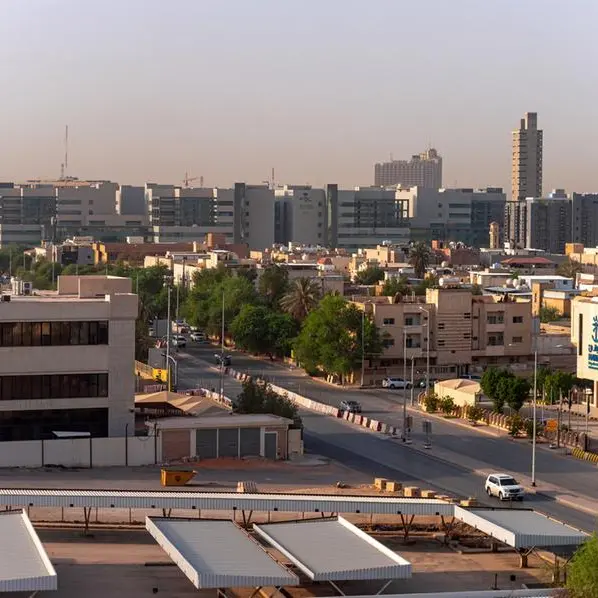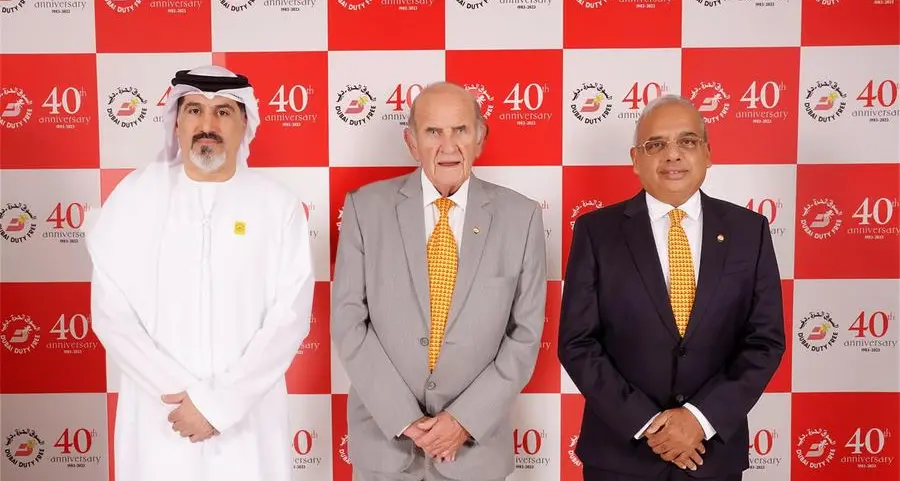- Global UHNWI population to grow by 27% over the next five years according to Knight Frank
- Number of millionaires globally forecast to rise by 41% in next five years
- In the five years to 2025 almost 330,000 Dollar millionaires will be created in the Middle East, an estimated increase of 29.4% from 2020 levels
- Saudi Arabia’s UHNW population grew by 227% over the last five years, the fastest growth rate globally
- Asia to outperform with the number of UHNWIs set to increase by 39% over next five years
Dubai, UAE – According to Knight Frank’s forthcoming edition of The Wealth Report, the number of ultra-high-net-worth individuals (UHNWIs), those with US$30m or more, around the world is predicted to grow by 27% in the next five years to 2025 taking the population to 663,483. Over the same period, the number of millionaires globally is set to rise by 41%.
Knight Frank predicts that Asia is likely to see the largest rise in the number of UHNWIs with growth of 39%, led by Indonesia (67%) and India (63%). Europe will retain its crown as the second largest wealth hub with expected growth of 23%, bringing the total number of UHNWIs to 185,860. The biggest rises in Europe are forecast in Poland (61%) and Sweden (59%). In the Middle East, we expect the number of UHNWIs to increase by 24.6% in the five years to 2020, with the region expected to remain the fourth largest wealth hub in the world.
Liam Bailey, Global Head of Research at Knight Frank said: “Asia is the key wealth story. The US is, and will remain, the world’s dominant wealth hub over our forecast period, but Asia will see the fastest growth in UHNWIs over the next five years, 39% compared to the 27% global average. By 2025, Asia will host 24% of all UHNWIs, up from 17% a decade earlier. The region is already home to more billionaires than any other (36% of the global total). China is the key to this phenomenon with 246% forecast growth in very wealthy residents in the decade to 2025.”
Africa is expected to see the second biggest regional five-year UHNWI growth rate of 33%, led by Zambia (40%) and South Africa (32%). The outlook for households earning of US$100,000 a year is even more positive according to Oxford Economics, which is forecasting growth of 139%.
Taimur Khan, Head of Research at Knight Frank Middle East noted: “The pandemic has impacted the fortunes of many in the Middle East, and Middle Eastern HNWIs and UHNWIs were not spared, with the total number of each decreasing by 11.3% and 10.1% in 2020 respectively. However, this decline was not uniform across all countries, In Saudi Arabia over this period, the number of UHNWIs increased by 9.6%, the 10th fastest growth rate globally. In fact, its UHNW population has grown by 227% over the last five years, the fastest growth rate globally over this period. As the region continues its various economic diversification programs we expect that there will continue to be significant growth in the number of HNWI, UHNWI and Billionaires residing in the region.”
Looking back at 2020, Knight Frank’s wealth sizing model reveals that the number of UHNWIs globally increased by 2.4%, one-third of the growth rate in 2019 bringing the total to more than 520,000. China saw the largest increase in its UHNW population (9,594 additional UHNWIs) followed by the US (6,080) and Japan (1,199).
Henry Faun, Partner, Knight Frank Private Office, Middle East said: “In the middle of a global pandemic and the related economic crisis why should we be interested in the wealthy? Simply put if we are to understand market and asset performance then the wealthy form a central part of the story. The objective of The Wealth Report is to assess how the fortunes of UHNWIs are changing, where they spend time, what they invest in and what they are likely to do next. From policy makers to investors, a lack of insight into the behaviour and attitudes of the “one-percent” risks a serious misreading of economic trends.
The Middle East is expected to remain as the World’s fourth largest wealth hub. This reinforces the Middle East as a globally significant centre for wealthy individuals looking ahead”
According to the Knight Frank Attitudes Survey, a survey conducted amongst leading private bankers and wealth advisers, half said their clients’ wealth had increased in 2020. Those with North American clients were most optimistic with 73% citing an increase and a further 23% seeing stability. North America’s UHNWI population sits 4% higher than 2019. The regions which were seemingly able to control the Covid-19 pandemic best, Asia and Australia, were the strongest performers with growth of 12% and 10% respectively. In the Middle East 67% of respondents cited that their clients’ wealth either remained the same or increased. These advisors are confident of their clients future fortunes with 69% expecting their clients’ total wealth to increase in 2021.
Among the survey respondents who said their UHNWI clients’ wealth had increased, three key themes emerged as to why: diversification, equities and property.
Forecast regional UHNWI populations in 2025 and countries with highest five-year growth*
World | 663,483 | ||||
Africa | 4,361 | Zambia | 40% | South Africa | 32% |
Asia | 161,878 | Indonesia | 67% | India | 63% |
Australasia | 6,689 | New Zealand | 52% | Australia | 20% |
Europe | 185,860 | Poland | 61% | Sweden | 59% |
Latin America | 18,060 | Mexico | 26% | Brazil | 23% |
Middle East | 37,241 | Turkey | 43% | UAE | 22% |
North America | 236,297 | US | 24% | Canada | 23% |
Russia & CIS | 13,097 | Kazakhstan | 33% | Russia | 29% |
Source: Knight Frank Wealth Sizing Model *of those modelled
The countries, which saw the biggest increase in their UHNWI population in 2020
Country | Change in UHNWI population in 2020 | 2020 UHNWI population | Annual Change |
China | 9,594 | 70,426 | 15.8% |
US | 6,080 | 180,060 | 3.5% |
Japan | 1,199 | 14,755 | 8.8% |
Germany | 789 | 28,396 | 2.9% |
Canada | 766 | 10,025 | 8.3% |
Switzerland | 646 | 7,553 | 9.4% |
Saudi Arabia | 617 | 7,020 | 9.6% |
Sweden | 531 | 5,243 | 11.3% |
South Korea | 436 | 7,354 | 6.3% |
Singapore | 345 | 3,732 | 10.2% |
Source: Knight Frank Wealth Sizing Model
For all media & PR enquiries, please contact:
Thomas Farmer | E: Thomas.Farmer@me.knightfrank.com
Knight Frank has grown to become the world’s largest privately owned global property agency and consultancy company and has a strong presence in the Middle East with offices in Dubai, Abu Dhabi, and Saudi Arabia.
Together with its New York-based affiliate Newmark, Knight Frank has an impressive global footprint network across 57 territories, 488 offices and over 20,000 property professionals and as the world’s leading international property consultant, they continue to build on their long-term global presence across the residential and commercial property and service sectors.
For further information about Knight Frank, please visit www.knightfrank.com or www.knightfrank.ae
© Press Release 2021
Disclaimer: The contents of this press release was provided from an external third party provider. This website is not responsible for, and does not control, such external content. This content is provided on an “as is” and “as available” basis and has not been edited in any way. Neither this website nor our affiliates guarantee the accuracy of or endorse the views or opinions expressed in this press release.
The press release is provided for informational purposes only. The content does not provide tax, legal or investment advice or opinion regarding the suitability, value or profitability of any particular security, portfolio or investment strategy. Neither this website nor our affiliates shall be liable for any errors or inaccuracies in the content, or for any actions taken by you in reliance thereon. You expressly agree that your use of the information within this article is at your sole risk.
To the fullest extent permitted by applicable law, this website, its parent company, its subsidiaries, its affiliates and the respective shareholders, directors, officers, employees, agents, advertisers, content providers and licensors will not be liable (jointly or severally) to you for any direct, indirect, consequential, special, incidental, punitive or exemplary damages, including without limitation, lost profits, lost savings and lost revenues, whether in negligence, tort, contract or any other theory of liability, even if the parties have been advised of the possibility or could have foreseen any such damages.










